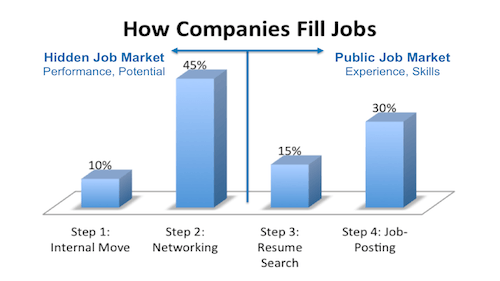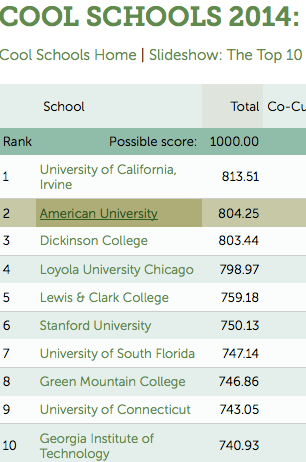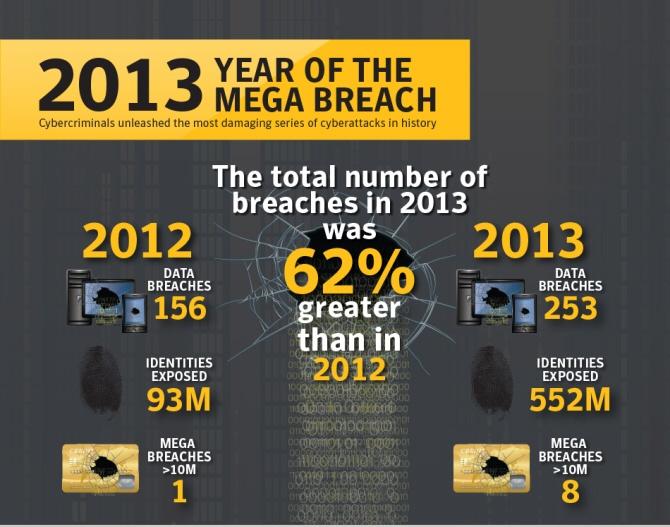TUI becomes first travel member of anti corruption business forum


TUI Travel plc, the leisure and travel company and owner of over 220 brands including Thomson and First Choice, has become the first company in the travel industry to be accepted into the Business Integrity Forum of Transparency International UK as a corporate member.
By joining Transparency International UK’s Business Integrity Forum, TUI Travel has become the latest member of a network of major international companies dedicated to ensuring their operations and business dealings are transparent and corruption-free. TUI Travel’s own integrity and anti-corruption compliance programme involves regular assessment against a global benchmark of gold standard practice.
Karis McLarty, director of group compliance, (legal & regulatory) commented: “To be accepted as a partner to the Business Integrity Forum is a great honour, and reflects the work that TUI Travel has done, and continues to do in this regard. To be the first in the travel industry is a fantastic achievement and underlines our commitment to transparency across the business. Leading responsibly within the business and our industry is one of our core values within TUI Travel and this partnership is a testament to that.”
Peter van Veen, director of the business integrity programme, Transparency International UK, added: “We value TUI Travel as a member of the Business Integrity Forum. They have made clear their commitment to ensuring their operations and business dealings are free of corruption in the UK and abroad.”
Picture credit: © Glasshoppah | Dreamstime Stock Photos
Sustainable Palm Oil Sales Surge as Demand Meets Supply


For 10 years the Roundtable on Sustainable Palm Oil (RSPO) has been on a mission to convert 100 percent of the world’s palm oil into a more sustainable and responsible commodity. It has been a long road, in part because of the world’s rapidly-growing demand for food and businesses’ reluctance to add what they perceive to be additional costs to their supply chains. But RSPO is now making real and measurable progress. Last week the Zurich, Switzerland-based organization announced that the demand for sustainable palm oil is outpacing supply for the first time.
According to RSPO, sales of sustainable oil, based on what the organization traces through supply chains, spiked almost 65 percent during the first two quarters of 2014 compared to last year. That is a total of over 1.1 million metric tons so far this year. Meanwhile sales of RSPO’s certified GreenPalm certificates, which companies can purchase to offset their use of conventionally sourced palm oil, grew by almost 38 percent.
These results bode well for RSPO, which has gained traction in Europe (in part because of directives calling for increased production of biofuels) but has lagged in other parts of the world. Overall demand for palm oil keeps rising for several reasons, including hydrogenated fats being phased out by manufacturers due to health concerns. Palm oil lacks any noticeable scent, boasts a natural preservative effect allowing it to extend the shelf life of food products and produces high yields compared to similar plant-based oils.
But as a result, the demand for palm oil has wreaked environmental impact, especially in southeast Asia. Indonesia and Malaysia combined account for over 90 percent of global palm oil production, with the rest spread between Papua New Guinea, other southeast Asian nations, Latin America and Africa. A host of environmental and social problems have ensued, from land rights violations to deforestation—and the loss of orangutan habitat has caught the attention of many activists who now vigorously protest the production of palm oil.
RSPO now estimates the world’s annual production capacity of certified sustainable oil stands at 18 percent. That figure is impressive considering how difficult and slow it can be for a large company to enact major changes within a supply chain. The Wall Street Journal has noted the change underway in palm oil sourcing, and some of the world’s largest companies are making the shift to RSPO certified palm oil. Kellogg’s, Cargill, and ConAgra are among the recent firms that have committed to sourcing sustainable palm oil. Other companies, including Dr. Bronner’s, source from regions where the orangutan population is not threatened.
Now over half the world’s suppliers have committed to either producing or trading sustainable palm oil, but much work remains to be done: many companies home to some of the world’s most popular brands are still moving too slowly. With some estimates suggesting deforestation is accountable for 20 percent of the world’s greenhouse gas emissions, companies can no longer overlook climate change-related risks to their portfolios—and risks from infuriating their stakeholders and in due time, their stakeholders.
Image credit: RSPO
Leon Kaye has lived in Abu Dhabi for the past year and is currently spending some time in Uruguay. Follow him on Instagram and Twitter. Other thoughts of his are on his site, greengopost.com.
Founder of Lonely Planet on Heritage Preservation


In far-flung places around the globe, there are endangered cultural sites in need of preservation, which spurs tourism and economic enrichment in nearby communities. Heritage conservation not only preserves historical record, but it can also open up a previously difficult-to-visit location to travelers and give them a whole new view of the region and its culture.
Tony Wheeler, founder of Lonely Planet and board member of Global Heritage Fund, has been to many "dangerous" sites on the planet, whether they are located in regions where there was a history of civil unrest or environmental hazards. But his aim, along with Vince Michael, executive director of Global Heritage Fund, is to encourage travelers (intrepid and armchair) to expand their horizons and explore these areas, many of which are heritage development sites that ultimately benefit local communities with tourism income.
Global tourism is responsible for 8.7 percent of the world's employment, making it one of the biggest global job creators, according to the 2012 report, The Comparative Economic Impact of Travel and Tourism, by the World Travel & Tourism Council. "At 9.1 percent of global GDP, Travel & Tourism generates more economic output than automotive manufacturing (7.9 percent), mining (8.0 percent) and chemicals manufacturing (9.0 percent)."
“Travel is a hugely important part of the world’s economy. It’s the way we meet other people and realize that other people are not just the tales we read in the newspaper and see on television screens, but they’re real human beings,” says Wheeler.
Recently, Wheeler and Michael shared their experiences visiting locations in Colombia, Turkey and Laos. Wheeler says that even destinations that are thought to be hazardous are navigable as long as travelers educate themselves and take precautions, “although the potential dangers are never as bad as people think they might be.”
In the 1970s and 1980s, Colombia had a negative reputation for drug trafficking which deterred many tourists from visiting. In the past 10 years, Michael explained, the drug trafficking has been rooted out and replaced with a growing tourist economy, boosted by native citizens acting as guides and providing lodging. Michael and Wheeler went on a three-day trek to Ciudad Perdida to view the stone platforms and stairways throughout the jungle.
“I never felt threatened by anything except the humidity and mud,” Michael laughed.
The accessibility of Ciudad Perdida is due to collaboration by the Global Heritage Fund, USAID (United States Agency for International Development) and the Colombian government.
Some locations were inaccessible in the past due to environmental concerns, like Plain of Jars, Laos, a 2,000-year-old heritage site containing thousands of ancient stone cylinders. For decades tourists were not able to visit due to abandoned land mines from the Vietnam War along the Ho Chi Minh Trail. Upon the removal of the land mines, tourists were better able to reach some of the Plain of Jars sites. Global Heritage Fund has also been instrumental in training locals on the importance of conservation and preservation.
"One of the things we do at Global Heritage Fund is identify these sites early on when they first become accessible and help build the local economy around the heritage site. It’s an opportunity when things start to change.I always like to use the example that we talk about community economic development and we can say, well, let’s build a factory there, build some shops or offices, but those are things that you can move to another place that might give you a better deal or have cheaper land or something like that. A heritage site is of a place, it’s not going to move, so if you can make that heritage site active economically, it’s a sustainable form of economic development,” says Michael.
Wheeler adds that while the sites can be important academically, in order for them to be a long-term, sustainable economic tool, the local community must be involved. “You need the local community to feel that ‘this is something we own, it’s our local site, we’re the people that live here, we want to protect it.’ And part of the reason is that they are making an income from it. They are running the guesthouse, the café, their son is a guide and their children work at the site - they have a real involvement with this,” says Wheeler.
The Global Heritage Fund works with local government and other partners to restore a site, then hands it off to be maintained locally. While the organization remains involved in the conservation work that is ongoing, partners and the community are responsible for moving things forward.
"When we got there [Göbekli Tepe, Turkey, a site that is 5,000 years older than Stonehenge], they had started excavating maybe fifteen years earlier and there was no conservation going on, and moreover there wasn’t any basic infrastructure. There wasn’t a fence around the site, there wasn’t any cover to protect the stones from eroding in the weather. We did those things and now we’ve leveraged the European Union to come in at a very high funding level to build a permanent cover and the local community has built a museum. It’s a very good example of how we try to get in there before it’s recognized, do the important work and get the community involved," Michael says.
"Global Heritage Fund has a detailed project selection process methodology that is called Preservation By Design that combines conservation and planning with community development and partnerships," Michael explained, "so we judge our projects based on those criteria. We look for developing regions of the world, places that need the investment or economic spinoff, and we look at threatened sites, whether they’ve been newly uncovered or looted, we look at world heritage, then we look at what are the possibilities for bringing our expertise and conservation planning and community development and what partners are there."
Although the influx of tourism is usually a welcome economic boost, there are sometimes barriers, Michael says. Bureaucracy in the form of permits and red tape and regions with conflicts that are too dangerous to overcome can halt a project. Also, being a foreign NGO can be both an advantage and disadvantage. Local politics can cause the organization to be frozen out, but at other times a foreign NGO can serve as a neutral outside party and smooth over local conflicts.
In all their travels, do Michael and Wheeler have a favorite site? They both say they are intrigued by an emerging project in rural Romania. Wheeler says the villages are "just beautiful," but people are leaving them and moving to the cities, so they are in danger of being abandoned. Global Heritage Fund is hoping to breathe some life back into them, which brings up another concern, Michael says. "In some ways the biggest threat to heritage can be development." The organization will have to walk a fine line to preserve their charm while bringing people to the Transylvanian countryside.
There is no shortage of sites being considered for preservation projects, Michael says. As a board member and life-long traveler, Wheeler sees a huge potential for Global Heritage Fund to grow and bring attention, and travelers, to deserving sites all around the world.
Image credits: Ciudad Perdida - Stefaan Poortman. Plain of Jars - Dan Thompson. Photos used with permission from Global Heritage Fund.
Climate Denial Smokescreen Now Extends to South Asian Food Challenges


The Heritage Foundation-backed National Center for Policy Analysis pumps out a steady stream of misinformation about climate change, continuously reinforcing the smokescreen behind which billions of dollars in fossil fuel profits continue to be made. Generally speaking, it’s best to ignore them, figuring that giving them attention only helps them do their job. But this latest item is so egregious, that someone needs to call them out on it.
Numerous international aid agencies, as well as ratings services like Standard & Poors, have stated that the areas of South Asia and Southeast Asia are among the most vulnerable to the impacts of global warming.
Yet this article, entitled “Calming Fears of Climate Change in South and Southeast Asia,” assures its readers that not only is there nothing to worry about, but things are going to get far better, since the increased carbon dioxide in the atmosphere is causing a boom in food production.
Their source is none other than Craig Idso, a former executive of Peabody Energy, the world’s largest private-sector coal company. Idso reports that South Asian food productivity has increased 7.5-fold in the past years, and attributes that, without evidence, to the increased presence of carbon dioxide in the air.
The increase in agricultural productivity is real enough. It is sometimes referred to as the Green Revolution. Most scholars attribute the Asian increase to four things: fertilizers, technology, labor and livestock. Irrigation has also played a major role in other regions. Indeed, just as in the period from 1980 to 2007, the utilization of fertilizers and tractors increased more than three-fold in places like Vietnam and Thailand recently, which is in line with the increase in productivity. None of them attribute it to the presence of increased CO2 in the air. Attempting to make this connection sounds a lot like what Idso has previously written about climate science, saying, “A weak short-term correlation between CO2 and temperature proves nothing about causation.” So where is the cause-and-effect linkage here?
Indeed, there have been some laboratory studies, which this brief fails to mention, showing increased plant growth -- under controlled conditions -- in a CO2-rich environment. The effect, which has been small, seems to favor arid conditions. But what happens when you take those conditions out to the field seems to be quite different. The enhancing effect of the extra carbon seems to preferentially affect indigenous, local species -- otherwise known as weeds.
But that’s okay. After all, there are folks who are happy to sell you more herbicides. But, unfortunately, there are other issues that come into play.
For one thing, increasing the amount of CO2 in the air also increases the plants’ need for water and fertilizer. Fossil records show that in earlier times, increased CO2 led to sharply increased insect predation of plants. For some reason, plants grown under these conditions attract more insects. Hmmm. This is starting to sound like an agricultural chemical company’s dream come true. But it’s not so good for the rest of us. Then, of course, there are the climate-related impacts: heat, drought, shifting growing seasons, migration of both defender and pest species.
The World Bank has also studied the issue, and they are extremely concerned about these vulnerable regions. In particular, they cite concerns over food security in sub-Saharan Africa, devastation of coastal areas in Southeast Asia, and food production impacts due to fluctuating rain patterns in South Asia.
Perhaps, instead of trying to sweep the issue under the rug and convince people to ignore any pangs of conscience about people starving overseas, it would be better to consider what can be done to avoid this. Initiatives like the U.N. FAO’s Climate Smart Agriculture program offer much in the way of helpful information for dealing with the challenges that are already being felt. Just ask any of the 870 million people in the world -- that’s 1 in 8 -- who are chronically undernourished.
Our world is in transition. Our agricultural system needs to respond to the three simultaneous challenges of ensuring food security for a growing population, while adapting to the changes resulting from an increasingly unstable climate, and, wherever possible, contributing whatever it can to climate change mitigation. That will require food systems to become more innovative, more efficient in their use of water and other inputs, and more resilient to whatever changes and surprises an unstable climate might send their way.
Image credit: sandy ford: Flickr Creative Commons
RP Siegel, PE, is an author, inventor and consultant. He has written for numerous publications ranging from Huffington Post to Mechanical Engineering. He and Roger Saillant co-wrote the successful eco-thriller Vapor Trails. RP, who is a regular contributor to Triple Pundit and Justmeans, sees it as his mission to help articulate and clarify the problems and challenges confronting our planet at this time, as well as the steadily emerging list of proposed solutions. His uniquely combined engineering and humanities background help to bring both global perspective and analytical detail to bear on the questions at hand.
Follow RP Siegel on Twitter.
How Information Technology Can Help Bridge Gaps in Education


By Nathan Edwards
Information and communication technology (ICT) first made an impact on the life of Fernando Botelho when he was in his late teens. Then, Botelho was a recent high school graduate suffering from increasingly impaired vision. Now, he is the founder of F123, a non-government organization developing low-cost open-source assistive technology for the blind.
“In high school I was ranked 11th in a class of 43,” Botelho recalls. When he entered college he was given access to assistive technology and it instantly impacted his success, “instead of 11th I was fourth, and instead of a class of 43 it was a freshman class of 904.” The qualitative impact that the right technology can have on someone’s education and life left a lasting impression on Botehlo, “same person, same brain, same level of education, but suddenly you are in the top percent”.
Although Botelho was granted the assistance of ICT’s in education, he does not represent the majority of disabled people. Eighty percent of people with disabilities around the world live in developing countries and even in wealthy economies such as the U.S., many cannot afford the software.
While working for the United Nations Agency in Switzerland, Botelho realized he wanted to take what had created opportunities in his life and make it more financially accessible to others. He addressed the issue of cost by developing an open-source version of this technology.
His organization, F123, has created a software that can be customized to any computer. “We identify free and open-source technologies that are effective and we adapt them for use by the blind in the context of school and work,” explained Botelho. The system includes common software applications, an electronic reader and screen magnifier, educational materials for teachers, and training instructions all costing 2 to 5 percent of the price of a standard e-reader.
Open-source software is technology produced and distributed including its source code. The source code acts as a recipe for the product allowing any person or entity to understand how the software operates and make improvements to it. According to Botelho, “there are clearly monopolistic practices going on in the software world,” and rather than build his product on top of a monopoly, he wants it to be freely accessed.
F123 has had great success in producing a low-cost, trilingual software used by people all over the world.
However, the question remains: To what extent can ICT’s like F123 help create equal opportunities in education?
“Just technology on its own does not really level the playing field, but it is a very large piece of the puzzle," Botelho said. “Education does not need products; education needs strategy." The products are just part of the strategy; “the rest of it is training for teachers and material that insures that the products and services are available to everyone."
Fernando Botelho has found a way to implement ICT’s in education for disabled persons, however they can be also be utilized in other areas of education.
For any innovative use of ICT to succeed, “it has to fit in the social context of where it is going to be used,” Botelho stated, “using it should not be a burden neither financially, culturally, nor technically.” He believes the most common error with ICT initiatives is that people get too caught up in the hardware and software and don't understand how to implement the product.
F123 is headquartered in the developing nation of Brazil, a nation where ICT's are becoming increasingly popular in non-formal education. International non-government organization, Ashoka has partnered with the Institituto Embratel Claro to learn more about how ICT’s can help bridge gaps in education caused by physical, social, or geographic barriers. These two organizations have initiated a challenge called, Tecnologia é Ponte.
If you are interested in joining a dialog about the inclusion of ICT's or learning more about the competition you can visit the Ashoka Changemakers' website.
Image credit: 1) Ashoka - Innovators for the public 2) F123
Nathan Edwards is a sophomore Sociology and Anthropology major with a concentration in cross-cultural studies at Carleton College in Northfield, MN. This summer, he is working as an intern with the international non-government organization, Ashoka, in its São Paulo, Brazil office while conducting anthropological research on the NGO sector. Nathan is interested in cross-cultural journalism and community development, specifically, in developing countries. He would like to pursue a career where he studies the varying communities, cultures and social dynamics within a nation and then illuminates the diverse perspectives.
Nestle's New Animal Welfare Commitments


Nestle, the global food giant known for its Nestle Crunch Bars, announced its new animal welfare program that will eliminate some common but cruel practices from its global food supply chain. Those cruel practices include confining sows in gestation crates, calves in veal crates and egg-laying chickens in cages. Nestle’s new guidelines also require that veterinary practices be implemented for farm animals that reduce pain or avoid practices that cause pain. Dehorning cows is one example. (Cow horns are removed so they can’t injure other cows.)
The announcement came after Nestle signed a partnership agreement with World Animal Protection International, making it the first major food company to form an international partnership with an animal welfare organization. World Animal Protection has been working with Nestle to improve its Responsible Sourcing Guideline, which all suppliers must follow as part of the company’s supplier code.
The new policy means that the hundreds of thousands of farms within Nestle’s supply chain have to comply with more humane animal welfare standards. When Nestle identifies a violation, it will work with the supplier to improve the farm animals’ treatment. If a company will not comply or show improvement, it will not be a supplier any longer. Nestle states on its website that it will “gradually” implement these requirements across their extended global supply chain.
“Our decision to work with Nestlé is based upon their clear commitment to improving animal welfare and the lasting change this can have on millions of farm animals around the world,” said Mike Baker, chief executive of World Animal Protection.
The drivers behind the shift away from cruel farm animal practices
For the past few years, a number of companies have made announcements regarding phasing out cruel farm animal practices from its supply chains. Last year, I talked to Josh Balk, director of corporate policy for the Humane Society of the U.S. (HSUS) Farm Animal Protection department. When I asked him what is driving companies to phase out practices like the use of gestation crates, he said, “In most cases, when presented with the facts about gestation crates, they work to eliminate them.” HSUS works with large food companies, sitting down with them and talking about certain farm practices. “That’s usually all it takes for companies to make great strides,” Balk said.
Balk cited three drivers for the shift away from confinement methods and other cruel practices: legislation, meat reduction efforts and consumer demand. A number of states have passed laws to protect farm animals. Many consumers are eating less meat. Meatless Monday is a good example. Some companies support Meatless Monday, including Burger King. Not only are consumers eating less meat, but they are also in favor of more humane practices. As Balk put it, the treatment of farm animals “causes a more visceral reaction.”
Image credit: Wikipedia
Beat the Job-Hunting Blues with an Updated Search Strategy


By Shannon Houde
If you are on the market for a new job, you will no doubt have noticed the recruitment revolution taking place online. The act of taking a red marker to ads in the classifieds section has long been replaced with scrolling, clicking, uploading, copying and pasting to the ubiquitous recruitment websites and jobs boards. The only thing that's stayed the same is the crossed fingers and anticipation with which each application is sent. But for the savvy sustainability jobseeker, even that is beginning to change.
These days, everyone from the largest multinationals to the smallest businesses can access an international talent pool without even posting an opening externally. This has turned the tables completely. Modern jobseekers are the ones doing the advertising, while hiring managers are the ones doing the seeking.
All this has made the process of finding and securing a job a much more targeted, strategic activity. If you want to stay ahead of the game and find the best roles, you need to know what recruiters are thinking, what they're looking for, and where. And you need to identify and communicate your niche.
A new global survey from Deloitte has found that 60 percent of companies have updated or are currently updating their talent-sourcing strategies and another 27 percent are considering changes. "Companies are looking for new ways to access and engage people," it says, "including through joint ventures, contracting, freelancers, and open source talent." And with good reason: many companies self-report underperformance in human resources and talent program capabilities.
With this in mind, don't you think it's time you updated your job seeking strategy too? Here are the top three new hiring trends and my tips on how to hack them for a dream job in sustainability.
1. Hiring from within
This is a big one that we're seeing more and more of in the industry. But how can you go for a job that hasn't even been posted? The trick is to get connected. Whether through face-to-face contact, informational interviews or LinkedIn relationships, an internal referral to an advertised role - or better, an internal posting that isn't advertised – increases your chances of getting to the top of the pile by 55%.
Many people think of networking as a dirty word (as I explored in my recent Triple Pundit article), particularly the face-to-face kind. It can feel intimidating, kinda risky. But think of it like an investment: the higher the risk, the greater the potential return. Getting out there and meeting people - whether at conferences or on campus - is a tried and tested route to recruitment success for both parties. The Deloitte report proves this, showing that companies "aggressively deploy referral marketing programs and send their key executives to universities and other critical sources of new talent around the world."
If the above is not practical for you however, look out for other ways to build relationships with key players in the companies you'd kill to work for. Social media is great for this whereas informational interviews are now a bit passé as people just don’t have time to honor them. Another idea that's gaining traction is the one-page job proposal - a proactive, compelling tool that can help you to create your own job.
2. Social tools
As the aforementioned Deloitte report points out, "as the battlefield for scarce talent continues to shift, talent acquisition is becoming more like marketing every day." Too true: 62% of executives saying that they rely on social tools for recruitment and staffing. Companies are using online platforms from LinkedIn to Facebook, Twitter to Glassdoor, Google to Yahoo, to find talent and market their companies to "passive job candidates".
With this in mind, you need to make sure that your online profiles are recruitment-ready, and LinkedIn is the obvious place to start. Reach out as well by engaging with relevant groups, forums and alumni networks in the sustainability space on platforms like Google Circles and LinkedIn groups.
3. Online talent communities
Another innovative tactic is companies' use of online platforms and social media sites to build talent “communities”. These communities comprise full-time employees, retired workers, independent contractors, and everyone in between - including potential staff members like you.
AT&T’s talent community, for example, attracts potential team members by providing a forum to talk about mobile computing and telecommunications, while online retailer Zappos has established an inventive careers portal through which opens up a two-way communication with the company that could lead to a job. Look out for online talent communities or careers portals at the companies you want to work for and make sure you put your best foot forward when engaging with them - you never know where it might lead.
Good luck in your job search! For some bespoke advice on career change navigation and personal positioning, contact me for a free 15-minute coaching session.
Image credit: Fran Villena, via Flickr/ CC BY
Shannon Houde is founder of Walk of Life Consulting, the first international career coaching business focused solely on the environmental, sustainability and corporate responsibility fields.
Six Tips for Improving Your Rank as a Green School


Editor's Note: This post originally appeared on the Green Impact blog.
Sierra Club’s Annual Cool Schools rankings are out. And the winner is … the University of California, Irvine. Congratulations, Anteaters!
After assessing the methodology and rankings of the top winners, compared to the others, I offer the following six tips for increasing your ranking as a green school:
- Participate in STARS;
- Tackle waste reduction, energy use, and water use;
- Create a sustainability hub;
- Craft and promote success stories;
- Tackle sustainable food; and
- Don’t shy away from SRI.
1. Participate in STARS
UCI, and the other top winners, are a participant in Sustainability Tracking, Assessment & Rating System (STARS), a transparent, self-reporting framework for colleges and universities to measure their sustainability performance. American University, ranked No. 2, is STARS Gold rated. The Sierra Club rankings are based on a survey, officially called the Campus Sustainability Data Collector. Schools did not need to be members of AASHE’s STARS program to use the collector, however, I am sure reporting of the data is much easier for campuses that have already gathered the appropriate data into the STARS system. Click here to learn more about how the ratings were scored.
2. Tackle waste reduction, energy use and water use
Based on UCI’s scores, it is clear that they have done an exceptional job of tackling waste reduction and reducing energy and water use. These are three low-hanging fruit areas that other universities can easily tackle. Green Mountain College ranked
3. Create a sustainability hub
All of the top winners have a stand alone sustainability Website. UCI has a stand alone sustainability hub, making it easy for faculty, staff, and students, as well as the community, to assess sustainability-related information. Its site is divided into the following sections:
4. Craft and promote success stories
American University’s sustainability Website includes a news section that highlights success stories. It also makes great use of social media to help increase engagement and promote successes.Dickenson College’s Website also does a great job of promoting success stories.5. Tackle sustainable food
All top ten winners captured at least 30 out of 50 points in the category of food. Points are given for purchasing local food, offering vegan options, and composting. American University’s program includes a weekly farmers’ market, a community garden, community supported agriculture, and sustainable food purchasing.
6. Don’t shy away from socially responsible investment
The campuses that are bold enough to authentically tackle socially responsible investing (SRI) have the potential to earn 70 points. Only University of South Florida and Green Mountain College (GMC) earned the complete 70 points in this category. In response to student request, GMC has instituted a new SRI policy to guide its investments in a responsible manner and create new educational opportunities. The Socially Responsible Investment Advisory Committee (SRIAC) was formed in the Spring 2010 to increase transparency and stakeholder involvement. Learn more about GMC’s investment portfolio here.
Images courtesy of the Sierra Club and the University of California, Irvine
Small Business Survival: The Real Risks with Viral Success


Viral success is the dream of just about every small business these days. Whether the business model is a website where users can upload videos for free, or a special app that gives people the ability to share the cost of a rental car, the idea of overnight success is just plain intoxicating.
And the advent of the sharing economy hasn’t helped. The successes of "collaborative consumption" companies have been staggering. Seven-year-old Uber, which these days is leading a popular movement to block more California regulation of car-sharing services, has been valued at $17 billion. Six-year-old accommodations facilitator Airbnb last April successfully closed talks with TPG for additional capital that raised its value to $10 billion, reportedly exceeding the value of Hyatt Hotels. Smaller startups like FlightCar, MonkeyParking and a variety of crowdsharing models, while not as spectacular in their commercial success have also seen the glory of overnight stardom that comes from offering something truly disruptive and unexpectedly cool.
And then there are those startups that have also experienced the challenges that come with overnight growth; challenges that in some cases have pitted them against local bylaws and attracted the attention of government regulators. In some cases, customer data became subject to court subpoenas. In more than one case, the very legality of the company’s right to operate became a contentious issue that put the privacy of its users at potential risk.
But gutsy business models and disruptive concepts aren’t the only areas where engaging and popular companies take risks. Those qualities are, after all, part of what defines today’s cutting-edge concepts. The real risks that startups often take, says Symantec’s small-to-medium business (SMB) expert Brian Burch, is with the security of their data.
Burch, who serves as the vice president of product marketing for Norton, is well known in the SMB community and well versed in some of the issues facing growing startups these days. In most cases, he says, the risks that companies experience aren’t defined by whether or not they are “collaborative consumption” models. Rather the risks are defined by inexperience, lack of preparation or lack of awareness of today’s rapidly changing cyber environment.
And changing it is. A report released by Symantec earlier this year reveals that 30 percent of ‘phishing’ attacks were leveraged against small businesses with 1-250 employees. Burch points out that the majority of small businesses that are hacked can’t survive the data breach and damages to their customers’ loyalty. As a result, the small business will often fold within a year. “So we really are talking about life and death here.”
Another chilling figure from the report indicated that the number of breaches went up by 62 percent in 2013 compared the previous year (from 156 to 253), but the number of identities that were exposed through those breaches were up by 493 percent (from 93 million to 552 million). That indicates that hackers have become more sophisticated and successful at gaining access than before.
“I think as the threat landscape has evolved over the time from what many people are familiar with as ‘hacking,’ -- some typically young person with tremendous coding skill, mischievous as all getout, anxious for glory -- that has all given way to cyber criminal activity and syndicates,” says Burch. Most telling is Symantec’s report in 2009 that cyber crime had surpassed the drug trade as a money-maker.
So pre-planning is absolutely essential to a startup’s success these days, says Burch. And that research phase needs to include IT infrastructure as well as a solid understanding of the legal and financial pitfalls the company might run into with its innovative concept. He recommended seven key steps that businesses must keep in mind in today’s fast-paced and often aggressive marketplace
- Make a solid IT infrastructure part of your founding team focus. “I hear more about startups, very small startups, with one, two, three founders who have an IT professional in the founding leadership team,” says Burch. And that’s because infrastructure really is the company. Since most startups feature cool apps that help the users interface with the services, it makes sense from a functional standpoint. But it’s also vital for the company’s security. Today’s criminals prey on companies that don’t make their infrastructure a priority from day one.
- Don’t depend on just one or two levels of protection. Use a multi-layered security process that goes beyond anti-virus software and the firewall and includes onsite and offsite data security, as well as mobile security. “There is so much rich capability now that can defend and make it incredibly difficult for the hackers to get through five layers of protection if you will, that it truly is an ounce of prevention is worth a pound of cure.”
- Check with the experts. Make sure you have vetted your startup idea with an attorney and have access to legal counsel. If you have a brainstorm for a new app that will allow users to use public facilities quicker, or get to the airport faster, great, but don't be afraid to run your concept past a lawyer who you can count on if you should run into unforeseen problems. And remember that great ideas attract lots of attention. Take advantage of all expertise before you shine the spotlight on your new startup. “Increasingly the value of many of these business models is leveraging the data that they are able to aggregate.” That data can often be of great value to more than just your company. Know your rights and their boundaries.
- Enforce a “Bring Your Own Mobile” from the start. “[Have] a very solid and well-defined ‘bring your own device’ (BYOD) policy that sort of balances both the privacy of the employee or the individual and the security of the company. Have it written down and followed.” Good “mobile hygiene,” Burch says, “can go a tremendous way to protecting the data that is so critical to the company.”
- Remember the fence is only as strong as the weakest link. To that end, governments across the world are working to create a cyber security framework that will help reduce cyber attacks. Four of the top 10 data breaches to occur took place in 2013. “So I believe the U.S. government and other governments around the world are really taking a collective approach,” Burch says. That includes last year’s Executive Order, which was directed at improving cyber security. But companies should rely on the government to set up safeguards, says Burch. “These novel companies have to make this a priority day 1 because they can’t assume that anyone else is going to protect them.”
- Never forget hackers are in business for themselves. The cyber criminals “are small businesses in themselves, and they have a criminal and nefarious set of objectives,” Burch says. They will take the time to research and target a small business that they think is ill-prepared. “A lot of the criminal networks will actually look for small businesses to penetrate, and then they use the small business to sneak into the back door of the customers of that small business.”
- Expect your customers to be mobile-savvy. Encourage mobile hygiene by staying on top of what’s out there, remaining approachable and educating your customers about how to identify your app. Help them “understand whether the app in question is a mainstream app and has millions of downloads rather than something that looks like it that only has tens of thousands.” And practice the same careful process yourself when downloading apps.
The new modus operandi of cyber criminals isn’t a broad-based strike against hundreds, or thousands or millions of victims as it once was, but rather the carefully researched strategy of a targeted attack. That means staying up on the newest cyber protection strategies is critical.
“[That] hyper growth curve can just be so sexy, but more than ever, companies of that ilk that have a great idea and who rocket to success absolutely positively need to understand that the same spotlight that gets trained on them that helps propagate their business success attracts the nefarious interests that are out there who are small businesses like they are.”
Staying informed, using well-researched business resources and keeping up-to-date with software and tools that protect not only the company's resources but also those of its customers, are all part of what will convert today's small business startups to tomorrow's viral successes.
Image courtesy of Symantec
Towards a Greener Beer: Craft Brewer Rolls Out the Evercan


As any regular reader of this site knows, sustainability and beer are two things the TriplePundit community takes very seriously. This is, after all, the place that brought you 2012’s Green Brewhaha, an exhaustive series on the sustainability movement in the brewing industry. So, it goes without saying that when a craft brewer begins packaging its beer in a can made of almost-entirely recycled aluminum, it is big news here; it should also be big news to the rest of the beverage industry.
The Red Hare partnership
In April, Georgia-based craft beer manufacturer, Red Hare Brewing Co., announced that it was partnering with the multinational aluminum producer Novelis, to package its beer in an “almost-entirely recycled” aluminum can. Developed by Novelis in 2013, the “evercan” is the only aluminum can sheet containing at least 90 percent recycled content -- nearly double the amount of recycled material in a standard aluminum can. And this is just the beta version. According to Novelis' chief sustainability officer, the company aims to be at 100 percent recycled content within a few years. Last week, Red Hare began rolling out the new packaging.
When Novelis was searching for evercan buyers, Red Hare seemed a natural partner. For one, Red Hare is small enough for a test run. (Illustrative of the company’s size, despite being a dedicated craft beer drinker I had never before heard of Red Hare and, according to the beer locating website Beer Menus, the nearest Red Hare purveyor is some 400 miles away. So a plea to Red Hare: ship the evercan to New Orleans distributors! We're a drinking -- and caring -- city!) For another, Red Hare has been can-only since the company's inception in 2011. As Novelis described it, Red Hare is a “small company with big ideas.” (Of course, both companies also happen to be headquartered in the Atlanta, Georgia area.)
Novelis: A sustainability champion
While much of the focus around the evercan will likely be on Red Hare and which other brewing companies adopt a more sustainable packaging model as a result, Novelis deserves more than just a pint of praise. The company is a model for sustainable manufacturers. In FY2013, 43 percent of the company’s inputs came from recycled aluminum, up from 33 percent two years earlier and significant progress toward the company's goal of 80 percent by 2020. Novelis also improved its energy efficiency by nearly 20 percent and reduced: absolute greenhouse gas emissions by 14 percent; water intensity by 16 percent; and total waste by 11 percent.
The company is also laser-focused on ambitious aluminum recycling programs. As Novelis points out in its most recent sustainability report: “Recycled aluminum avoids 95 percent of the greenhouse gas [...] emissions associated with primary aluminum production – and also uses significantly less energy and water." In support of its recycling efforts, Novelis recently began operations at a new recycling facility in Yeongju, South Korea, the largest fully-integrated beverage can recycling system in Asia; it also started construction on a plant in Nachterstedt, Germany, which, when complete, will be the world's largest aluminum recycling facility of any kind.
In other words: This isn't Novelis' first sustainability rodeo, and when the company suggests that it is aiming for 80 percent recycled inputs and a 100 percent recycled evercan, one would be wise to believe it will get there or die trying. That type of ambition is vital if we are serious about combating the effects of global warming and becoming a more sustainable species. On that note, one hopes that other breweries will follow Red Hare's lead and look for more sustainable packaging options.
The future for the beer industry?
The craft beer industry is ripe for this type of development, thanks in part to the "craft can" movement sparked by Oskar Blues in 2002. Prior to Oskar, canned beer was frowned upon, and beer connoisseurs wouldn't be caught dead with a six-pack of aluminum. Oskar changed that, primarily by putting out consistently excellent brews packaged exclusively in cans. Now, according to the CraftCans.com database, there are nearly 1,500 canned craft beers from 413 breweries, representing 94 different styles of beer and every state in the U.S. In prime beer markets like Denver, Colorado, it seems like a new craft beer is being released in a can every week. Personally, I think some of the best beer on the market is packaged in cans. Oskar Blues and Sixpoint are obvious examples; lesser-known New Orleans breweries like Tin Roof and NOLA offer cans, too, as do numerous other larger, classic breweries like 21st Amendment, Founders, Goose Island, Harpoon and Magic Hat.
So, while the jury may still be out on whether bottles or cans are, in their traditional forms, more sustainable forms of packaging, it is clear that the evercan represents an advancement and one unique to the aluminum can. According to Georgia Tech Professor Dr. Thomas Sanders, interviewed by the AP for its feature on the evercan, more companies are likely to embrace a more sustainable packaging model because of the clear economic benefits of using recycled content. Given the number of craft brewing companies already using cans, as well as the sustainable bent of some of the industry’s leaders, one has additional reasons to be optimistic.
In the meantime, as consumers we can do our part by supporting Red Hare (by purchasing its beer and encouraging local distributors to stock it), urging our favorite brewing companies to follow Red Hare’s lead, and being more diligent about recycling.
Image courtesy of Red Hare Brewing Co.